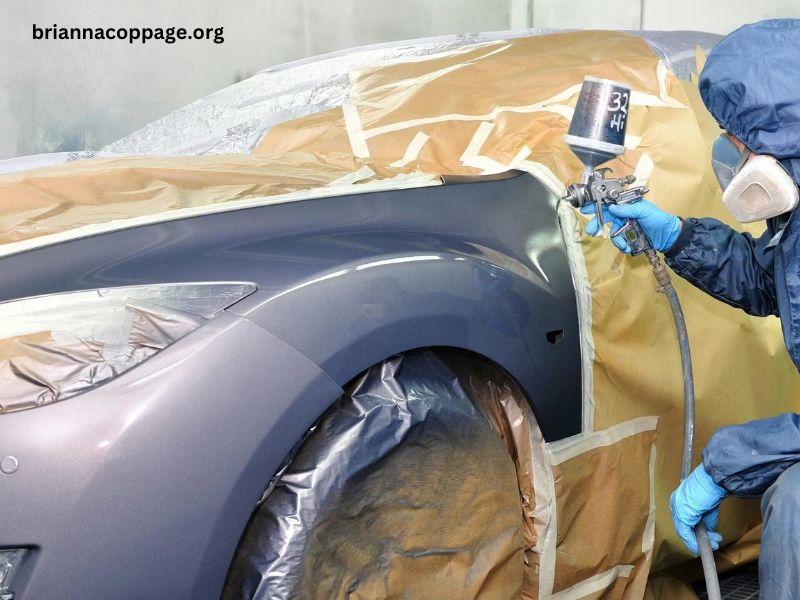When it comes to painting a car, one of the first questions that comes to mind is, “How much paint will I need?” Whether you’re repainting your car for a fresh look or giving it a full restoration, understanding how much paint is required can save you time, effort, and money. The amount of paint needed for the job depends on a variety of factors, including the size of the vehicle, the type of paint, the number of coats, and the method of application. In this article, we’ll explore these variables in detail and offer some helpful tips for calculating how much paint you need to paint a car.
Factors That Affect How Much Paint You Need
1. Size of the Car
The size of the vehicle is perhaps the most straightforward factor in determining how much paint you will need. A small car like a compact sedan or hatchback requires less paint than a large truck or SUV.
- Small Cars: A small sedan, hatchback, or coupe typically requires between 1 and 1.5 quarts (about 1-1.5 liters) of paint per coat.
- Medium-Sized Cars: For a mid-size sedan, wagon, or crossover, you can expect to use about 1.5 to 2 quarts (1.5-2 liters) per coat.
- Large Cars or Trucks: Full-size cars, SUVs, and trucks can require 2.5 to 3 quarts (2.5-3 liters) of paint per coat.
The number of coats you apply also impacts the total amount of paint needed. Typically, you’ll apply a base coat, followed by a clear coat for added protection and shine. On average, 2 to 3 coats of base paint and one clear coat are applied, although this may vary depending on the type of paint and the desired finish.
2. Type of Paint
The type of paint you choose will significantly impact how much is needed. Automotive paints are generally available in several types, including:
- Single-Stage Paint: This is a paint that combines both the color and the clear coat in one product. It’s easier to apply but may not offer the same level of durability or depth as a two-stage paint system. Single-stage paint typically requires fewer coats, but you’ll still need to apply 2-3 layers for a solid, consistent finish.
- Two-Stage Paint: This involves applying a base coat of color, followed by a separate clear coat. The base coat is usually a little thinner, and it may require multiple layers for opacity, while the clear coat offers a glossy finish and protection. Two-stage systems are more common for professional paint jobs and provide better results, but they can require more paint overall because of the need for both a base and clear coat.
- Metallic or Pearl Paint: These types of paints contain additional materials that give the finish a unique, shimmering effect. They can be more difficult to apply evenly and may require additional coats or special techniques to ensure the coverage is even.
The more layers you apply, the more paint you will need. Typically, you’ll need 1 quart of base paint per coat, and for clear coats, 1 quart should suffice for most vehicles, although larger cars might require more.
3. Application Method
The method of application is another factor that affects how much paint you’ll use. The most common methods are spray guns and aerosol cans, each with its advantages and challenges.
- Spray Guns: When using a spray gun, you can achieve a more even and controlled application of paint. However, spray guns tend to waste more paint than aerosol cans due to overspray, particularly if you’re not experienced. You’ll also need to factor in the cost of the gun and compressor if you don’t already have them.On average, you can expect to use about 1.5 to 2 times the amount of paint compared to what’s absorbed by the surface of the vehicle, including the extra paint lost in overspray.
- Aerosol Cans: Spray cans are a good option for smaller jobs, touch-ups, or DIY projects. However, using spray cans for an entire car is inefficient, and you’ll likely need more cans than you might think. Typically, a single can of spray paint covers about 12 to 15 square feet. If you’re planning to repaint the whole car with spray cans, you’ll likely need anywhere from 15 to 30 cans, depending on the vehicle size and the number of coats.
4. Color and Coverage
The color of the paint and the coverage it provides also impact the amount of paint you’ll need. Lighter colors such as white, silver, or beige often require fewer coats to cover the existing paint because they tend to be more opaque. On the other hand, darker colors like black, navy blue, or red may require more coats, especially if you’re covering a different color entirely.
Additionally, some brands of paint have better opacity and may cover the car more efficiently, allowing you to apply fewer coats. Always check the manufacturer’s recommendations for coverage to help you gauge how much paint you’ll need.
5. Condition of the Vehicle’s Surface
Before you apply any paint, consider the current condition of the vehicle’s surface. If the car has rust, chips, or old paint that needs to be removed, you may need to use more paint to cover up these imperfections.
- Surface Preparation: For a smooth, even finish, the car’s surface should be sanded and cleaned before painting. If there are significant imperfections, such as deep scratches, dents, or rust, you’ll need to spend additional time preparing the surface, possibly using primers, fillers, and sandpapers.
- Priming: If you’re painting over bare metal or need to block rust, a good primer can help ensure adhesion and better coverage of the topcoat. Primers may also require additional coats, which increases the overall paint requirement.
6. Number of Coats
The number of coats you plan to apply is a crucial factor in how much paint you’ll need. Most professionals will apply at least two coats of base color and one coat of clear coat. However, some colors or finishes may require more layers, especially if you’re painting over a dark color with a light one.
- Base Coat: The base coat will give the car its color. Depending on the opacity of the paint and the existing color, you may need 2-3 coats to achieve a uniform finish.
- Clear Coat: The clear coat serves as a protective layer, providing a glossy finish and helping to protect the paint from fading, scratches, and chips. Typically, one or two coats of clear coat are applied, but larger vehicles or those exposed to harsher conditions may benefit from additional coats.
7. Waste and Overages
When estimating the amount of paint needed, it’s always a good idea to account for some overage. Factors like paint wastage, overspray, and spills can add up, especially if you’re using a spray gun. Having a little extra paint will ensure that you don’t run out in the middle of your project.
It’s common to purchase an extra quart or even gallon of paint if you’re doing a full car repaint, just to be on the safe side.
How to Estimate the Amount of Paint You Need
As a general rule of thumb, here’s a basic estimate for how much paint you’ll need based on the size of the vehicle and the type of paint:
| Vehicle Type | Base Coat Paint | Clear Coat Paint | Total Paint Needed |
|---|---|---|---|
| Small Car | 1-1.5 quarts | 1 quart | 2-2.5 quarts |
| Medium Car | 1.5-2 quarts | 1 quart | 2.5-3 quarts |
| Large Car/SUV | 2-2.5 quarts | 1 quart | 3-3.5 quarts |
| Truck/Van | 2.5-3 quarts | 1 quart | 3.5-4 quarts |
If you’re using spray cans, multiply the number of quarts by about 5 (since a quart is approximately the equivalent of 5 spray cans). So, for a medium-sized car, you would need around 15-20 cans of spray paint for a base coat, and 5-10 cans for a clear coat.
Conclusion
When painting a car, understanding how much paint you need depends on several factors including the size of the car, the type of paint, the number of coats, and the method of application. On average, you can expect to use between 1.5 and 3 quarts of paint for a full car respray, with an additional quart for clear coat. Keep in mind that surface preparation, paint type, and color choice can all affect how much paint you’ll need. Always err on the side of caution by purchasing a little extra to account for overspray, waste, and touch-ups. With the right preparation and a careful estimate, you can ensure a smooth, professional-looking finish on your vehicle.






